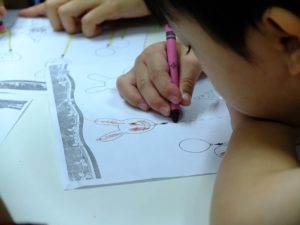Signs of Common Learning Disabilities
 Many children have difficulty with reading, writing, or other learning-related tasks at some point, but this does not mean they have learning disabilities. A child with a learning disability often has several related signs, and these persist over time.
Many children have difficulty with reading, writing, or other learning-related tasks at some point, but this does not mean they have learning disabilities. A child with a learning disability often has several related signs, and these persist over time.
Each learning disability has its own signs. Also, not every person with a particular disability will have all of the signs of that disability. Children being taught in a second language that they are learning sometimes act in ways that are similar to the behaviors of someone with a learning disability. For this reason, learning disability assessment must take into account whether a student is bilingual or a second language learner.
Below are some common learning disabilities and the signs associated with them:
Dyslexia
People with dyslexia usually have trouble making the connections between letters and sounds and with spelling and recognizing words.
People with dyslexia often show other signs of the condition. These may include:
- Failure to fully understand what others are saying
- Difficulty organizing written and spoken language
- Delayed ability to speak
- Poor self-expression (for example, saying “thing” or “stuff” for words not recalled)
- Difficulty learning new vocabulary, either through reading or hearing
- Trouble learning foreign languages
- Slowness in learning songs and rhymes
- Slow reading as well as giving up on longer reading tasks
- Difficulty understanding questions and following directions
- Poor spelling
- Difficulty recalling numbers in sequence (for example, telephone numbers and addresses)
- Trouble distinguishing left from right
Dysgraphia
Dysgraphia is characterized by problems with writing. This disorder may cause a child to be tense and awkward when holding a pen or pencil, even to the extent of contorting his or her body. A child with very poor handwriting that he or she does not outgrow may have dysgraphia.
Other signs of this condition may include:
- A strong dislike of writing and/or drawing
- Problems with grammar
- Trouble writing down ideas
- A quick loss of energy and interest while writing
- Trouble writing down thoughts in a logical sequence
- Saying words out loud while writing
- Leaving words unfinished or omitting them when writing sentences
Dyscalculia
Signs of this disability include problems understanding basic arithmetic concepts, such as fractions, number lines, and positive and negative numbers.
Other symptoms may include:
- Difficulty with math-related word problems
- Trouble making change in cash transactions
- Messiness in putting math problems on paper
- Trouble recognizing logical information sequences (for example, steps in math problems)
- Trouble with understanding the time sequence of events
- Difficulty with verbally describing math processes
Dyspraxia
A person with dyspraxia has problems with motor tasks, such as hand-eye coordination, that can interfere with learning.
Some other symptoms of this condition include:
- Problems organizing oneself and one’s things
- Breaking things
- Trouble with tasks that require hand-eye coordination, such as coloring within the lines, assembling puzzles, and cutting precisely
- Poor balance
- Sensitivity to loud and/or repetitive noises, such as the ticking of a clock
- Sensitivity to touch, including irritation over bothersome-feeling clothing
Source: National Institutes of Health | What are the indicators of learning disabilities?, https://www.nichd.nih.gov/health/topics/learning/conditioninfo/pages/symptoms | Last revision December 2016
Do you have concerns about your child? We invite you to call our Care Coordinators at 650.688.3625 or email us at careteam@chconline.org to set up an initial Parent Consultation appointment.





